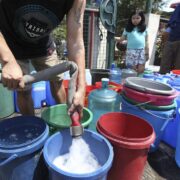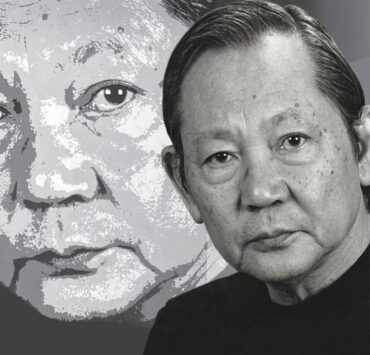PH market tagged best in SE Asia on slowing inflation

The Philippines is the most favorable among emerging markets in Southeast Asia because of easing inflation and a stronger peso.
In its Regional Market Outlook for the second half of the year, Singapore’s DBS Bank maintained its 6,900 yearend target for the benchmark Philippine Stock Exchange Index (PSEi).
“Key factors that weighed down the Philippine equities market in the last 24 months have turned favorable,” DBS said in its report.
The target is still based on a projected equity risk premium of 490 basis points, implying that investors are cautious about buying stocks at a high price amid lingering risks.
But in opting to maintain its index outlook, DBS said inflation in the Philippines had “eased meaningfully,” while the peso also managed to regain its strength against the US dollar.
Inflation cooled to a five-year low of 1.3 percent in May from 1.4 percent in April due to lower utility costs.
Strong peso
Meanwhile, the local currency improved to 55.62 against the greenback on Friday from 55.77 on Thursday. Japan’s MUFG Bank also anticipates the peso to appreciate to 54.50 against the US dollar by the first quarter of 2026.
With these factors in play, DBS pointed out that the Bangko Sentral ng Pilipinas now had more room to cut rates.
“We believe these developments set the stage for a constructive Philippine equity backdrop in [the second half of 2025],” DBS said.
It likewise noted that the Philippines had the best economic growth outlook in the region at 5.8 percent this year, versus Singapore’s 2 percent, Thailand’s 1.8 percent and Indonesia’s 4.8 percent.
Adding to this optimistic outlook is the fact that the Philippines was less reliant on trade for economic growth compared with its peers, DBS explained.
Thailand’s economy, for example, was the most export-driven, making it the least attractive market for investors.
Once US President Trump’s 90-day tariff truce ends on July 31, the Philippines will be one of the countries to see the weakest impact.
Semiconductors, electronics assembly and agricultural products were among the main goods it exported to the United States last year.
These resulted in a net export surplus of $5.3 billion, representing 1.2 percent of the Philippines’ gross domestic product. This surplus means that the Philippines exported more products to the United States than it imported, earning for it an original tariff of 17 percent that had also been paused.
Semiconductors
Still, DBS said, “We note that the impact may be even less significant, as semiconductors—its key export—remain exempt from proposed tariff measures.”
Earnings outlook for companies in the benchmark PSEi also remained intact at 11 percent this year and 7 percent in 2026, mainly because their revenue drivers still came from domestic operations.
“Key sectors—such as banks, utilities, property and conglomerates—are largely shielded from external trade shocks, further supporting resilient earnings trajectory despite elevated global uncertainty,” DBS said.





















